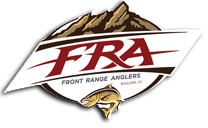Big Thompson River Report
Big Thompson River Report
12-10-2024
...
For dries, use a Chubby Chernobyl, Tail Water Midge, Hi Viz Quill Midge, Hanging Midge, Peacock Cluster, Griffith's Gnat, Micro Chubby, Mole Fly, and a Dry Humper.
...
For sub-surface, use a Juju Baetis, RS-2, Zebra Midge, Fire Bead Sow Bug, AR's Spanish Bullet, Thin Mint, Blue Poison Tung, Lil Bit, Tung Stud, Tail Water Tiny, Chocolate Emerger, and a Bling Midge.

Guide Rating
Weather Experienced
- Wind Conditions: Windy
- Precipitation: None
Water Observations
- Flow Level: 24.80 CFS
- Water Clarity: Near crystal clear
About Big Thompson River Fly Fishing
The Big Thompson becomes fishable at Moraine Park in Rocky Mountain National Park, about six miles downstream of its headwaters. It’s there at Moraine Park, where the river splits into numerous braids and channels, that fisherman encounter the river’s first public access. Trails leading up and down the river from that point will lead you to great flyfishing experiences.
Moraine is a wide-open area, but the Big Thompson’s banks are lined with willows. It’s typical small stream conditions, and the river is filled with, you guessed it, brook, brown, and cutthroat trout in the 6- to 12-inch range. They’ll readily take a variety of general attractor flies.
